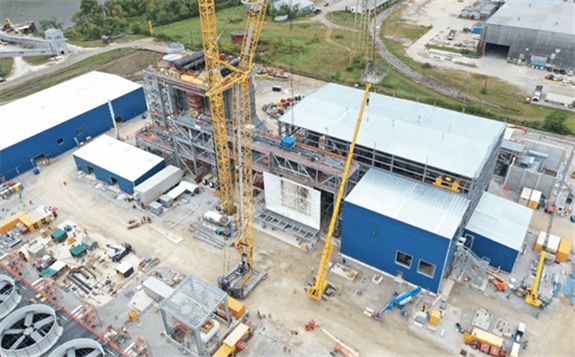Ohio-based energy supplier Long Ridge Energy Terminal has today announced plans to transition its 485-megawatt combined-cycle power plant to run on carbon-free hydrogen.

In collaboration with New Fortress Energy and GE, Long Ridge hopes to provide carbon-free power to its customers as early as next year by blending hydrogen into the gas stream and transition the plant to be capable of burning 100% green hydrogen over the next decade.
With commercial operations planned for November 2021, Long Ridge will be the first purpose-built hydrogen-burning power plant in the US and the first worldwide to blend hydrogen in a GE H-class gas turbine.
The plant will feature a GE 7HA.02 combustion turbine, which can burn between 15-20% hydrogen by volume in the gas stream initially, with the capability to transition to 100% hydrogen over time.
Long Ridge has engaged Black & Veatch to assist with developing plans for the plant integration for hydrogen blending and to ensure safe and reliable industrial practices.
Scott Strazik, CEO of GE Gas Power, said, “We are thrilled to work with the Long Ridge and New Fortress Energy teams on this first-of-its kind GE HA-powered project that will drive a cleaner energy future by utilising hydrogen to ultimately produce carbon-free power.”
“As one of the leaders in decarbonisation in the gas turbine industry and the OEM with the most fleet experience in using alternative low heating value fuels including hydrogen, we look forward to applying more than 80 years of experience to help Long Ridge achieve its goal of providing reliable, affordable, and lower-carbon power to its customers.”
To support the transition, Long Ride is teaming up with NFE’s new divison, Zero, who will support the carbon-free power transition as it scales up novel technologies that can produce low-cost hydrogen.
For initial testing of hydrogen blending, Long Ridge has access to nearby industrial byproduct hydrogen. For the production of green hydrogen with electrolysis, Long Ridge has access to water from the Ohio River.
Over time, below ground salt formations can be used for large-scale hydrogen storage.